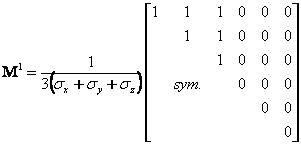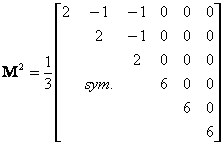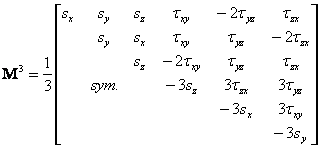In this method the material is allowed to sustain stresses outside the failure criterion for finite "periods". Instead of plastic strains, we refer to viscoplastic strains and are generated as a rate that is related to the amount by which yield has been violated by:
|
|
(163) |
where F is the yield function and Q is the plastic potential function.
The increment of viscoplastic strain, which is accumulated from one iteration to the next, is obtained through multiplication the strain rate by a pseudo time step as:
|
|
(164) |
and
|
|
(165) |
where the time step for numerical stability depends on the assumed failure criterion as:
|
for Von-Misees materials |
(166) |
|
for Mohr-Coulomb materials |
(167) |
The derivatives of the plastic potential function Q with respect to stresses are expressed as:
|
|
(168) |
where ![]() where t represents the second deviatoric stress invariant:
where t represents the second deviatoric stress invariant:
|
|
(169) |
and
|
|
(170) |
|
|
(171) |
|
|
(179) |
where the first invariant (mean stress invariant) s is given by the relation:
|
|
(180) |
It may be noted that in geotechnical applications, plane strain conditions are enforced and in the above equations ![]() .
.
The viscoplastic strain rate is evaluated numerically by the expression:
|
|
(181) |
where
|
|
(182) |
|
|
(183) |
|
|
(184) |
|
|
(185) |
The self-equilibrating body loads are accumulated at each time step within each load step by summing the following integrals for all yielded elements (F>0 at Gauss points):
|
|
(186) |
This process is repeated at each time step iteration until no integration point stresses violate the failure criterion within a given tolerance. The convergence criterion is based on a dimensionless measure of the amount by which the displacement increment vector Ui changes from one iteration to other.
|
© GeoStru Software



